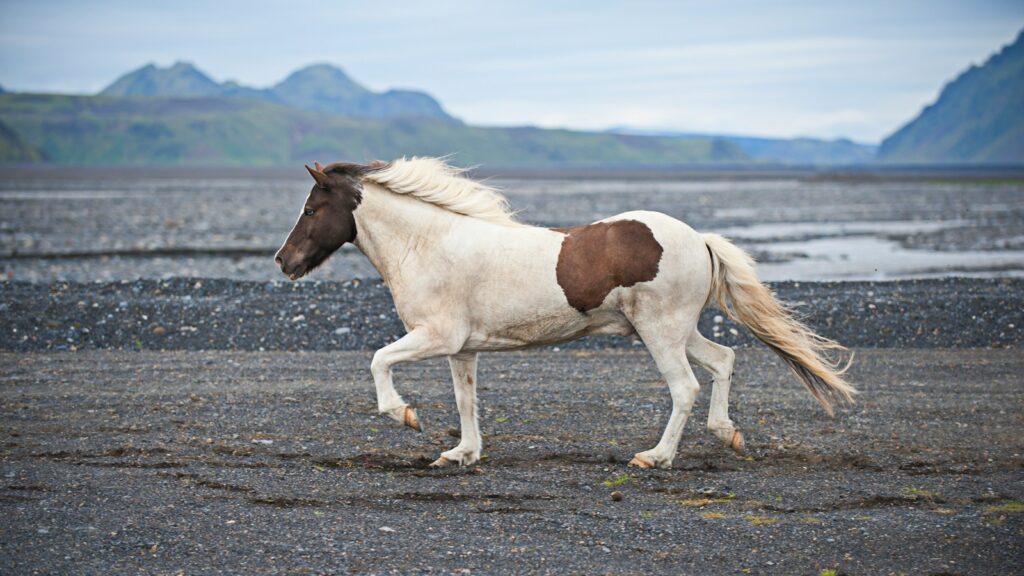Horses are magnificent flight animals whose natural instincts can sometimes create challenges when introducing them to other animals on a farm. Whether you’ve recently brought a new horse to your property or added other animals to your existing equine setup, proper desensitization is crucial for everyone’s safety and harmony. Horses that react fearfully to dogs or farm animals can create dangerous situations for themselves, other animals, and their handlers. This comprehensive guide will walk you through proven methods to help your horse become comfortable and confident around other creatures, building a foundation of trust that benefits your entire farm ecosystem. With patience, consistency, and the right approach, you can transform even the most anxious horse into one that remains calm and collected in the presence of dogs, chickens, goats, and other farm residents.
Understanding Your Horse’s Natural Instincts
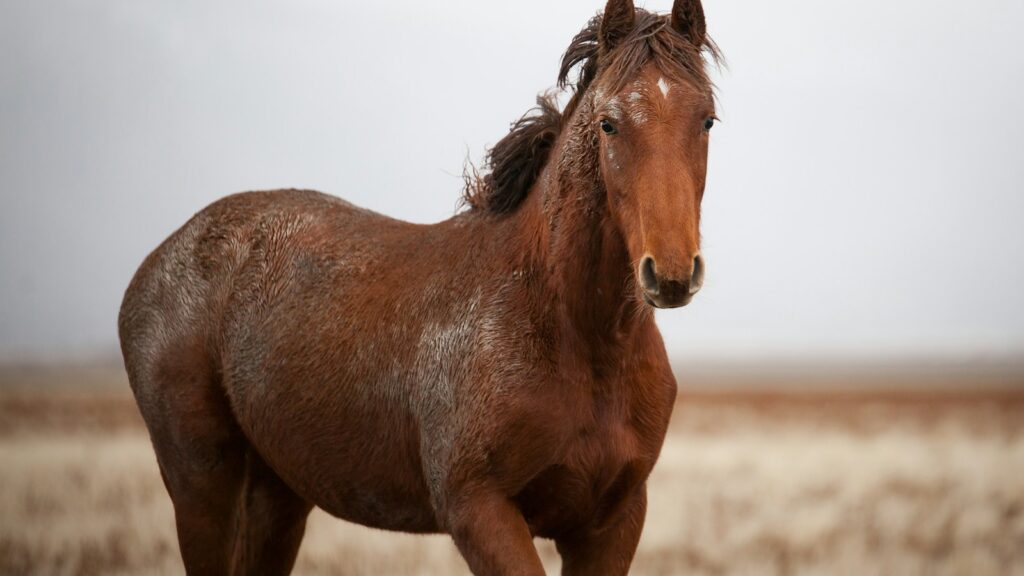
Horses are prey animals that have evolved over millions of years to survive by fleeing from perceived threats, making their “fight or flight” response particularly sensitive compared to predator animals like dogs. This natural instinct means that unfamiliar movements, sounds, or creatures can trigger anxiety or fear reactions in even the most well-trained horse. When a dog runs or barks suddenly, your horse isn’t being “difficult” – it’s responding to deep-seated survival mechanisms that have kept its ancestors alive for generations. Understanding this fundamental aspect of equine psychology is the first step in creating an effective desensitization program. By respecting these natural instincts while gradually helping your horse overcome them, you’ll build a stronger partnership based on trust rather than force.
Assessing Your Horse’s Current Comfort Level
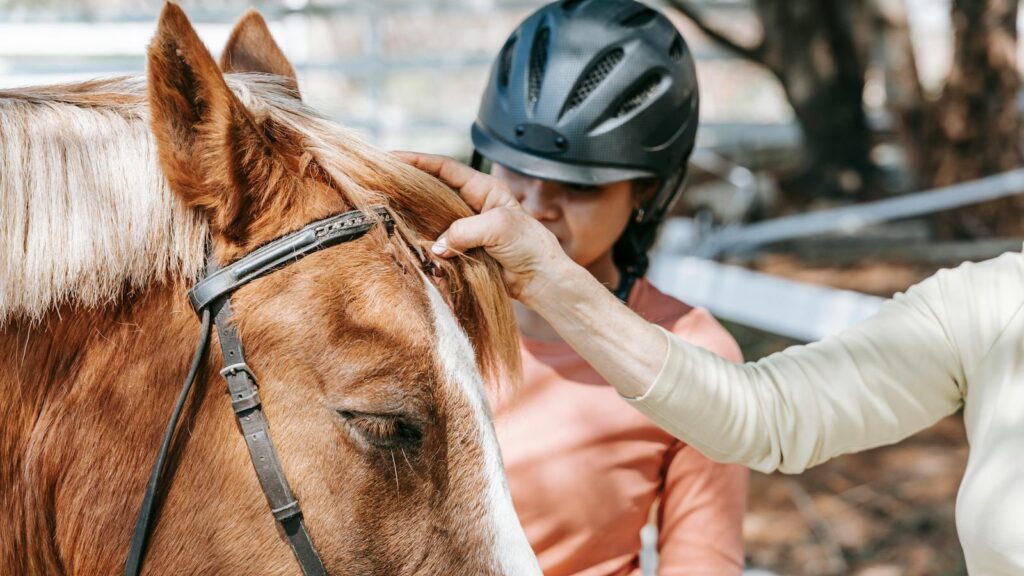
Before beginning any desensitization work, it’s essential to honestly evaluate your horse’s current reactions to other animals. Some horses might show mild curiosity or slight nervousness, while others might exhibit extreme fear through behaviors like bolting, rearing, or refusing to enter certain areas where they’ve encountered animals before. Carefully observe your horse’s body language when exposed to different farm animals at varying distances – look for signs of tension such as elevated head position, flared nostrils, wide eyes, tense muscles, or reluctance to move forward. This baseline assessment helps you establish a starting point for your training and allows you to measure progress over time. Remember that horses with previous negative experiences with dogs or other animals may require more patience and a more gradual approach than those who are simply unfamiliar with other creatures.
Creating a Safe Training Environment
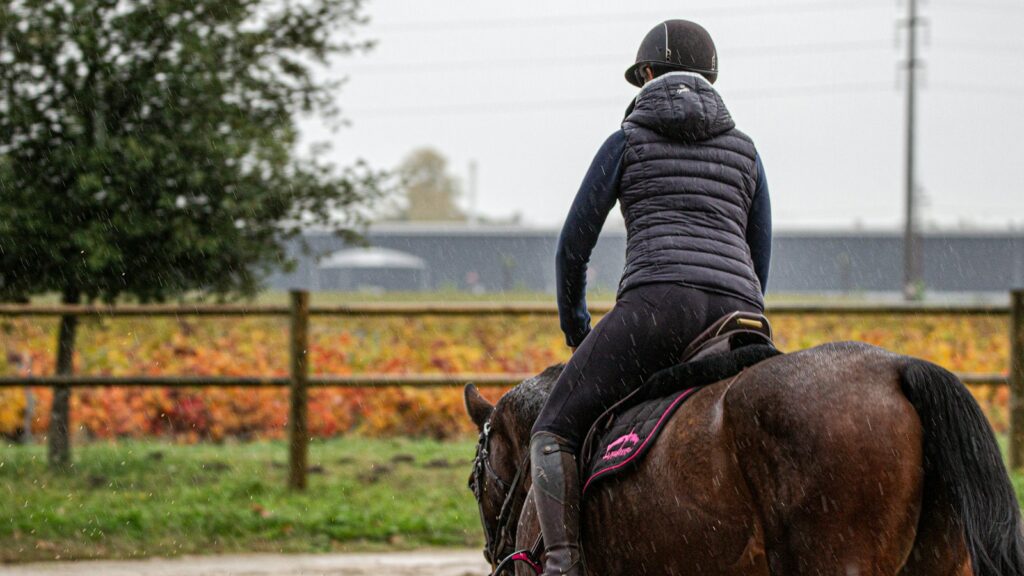
Safety should be your primary concern when introducing horses to other animals, as fearful reactions can quickly escalate into dangerous situations. Begin your desensitization work in a secure, enclosed area with good footing and minimal distractions – a round pen or small paddock often works well. Ensure all fencing is secure and appropriate for containing both your horse and the animal you’re introducing. Have an experienced handler for each animal involved, and always wear appropriate safety gear, including a helmet, if you’ll be riding during any part of the process. Establish multiple exit strategies and safe zones in case either animal becomes overly stressed. The environment should allow for controlled interactions where both animals can be kept at appropriate distances and removed from the situation if necessary, preventing negative experiences that could set back your training progress.
Starting with Distance: The Threshold Approach
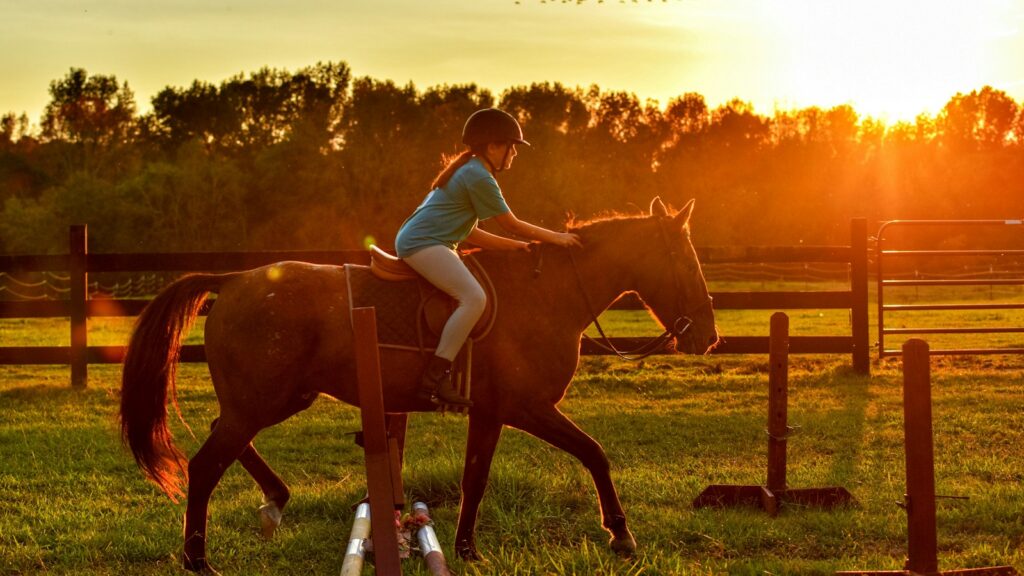
One of the most effective desensitization techniques is the threshold approach, which involves identifying the distance at which your horse first shows signs of concern about another animal, then working just inside that comfort zone. For example, if your horse becomes tense when a dog is 50 feet away, begin by having a calm, controlled dog at 60 feet away – close enough that the horse notices, but not close enough to trigger fear. Reward your horse with praise, treats, or scratches when it remains calm, gradually decreasing the distance as the horse’s comfort increases. This methodical approach respects your horse’s boundaries while gradually expanding its comfort zone. Remember that thresholds can vary widely between horses – some may be comfortable with a dog 10 feet away in their first session, while others might need to start with the dog barely visible in the distance.
Using Positive Association Techniques
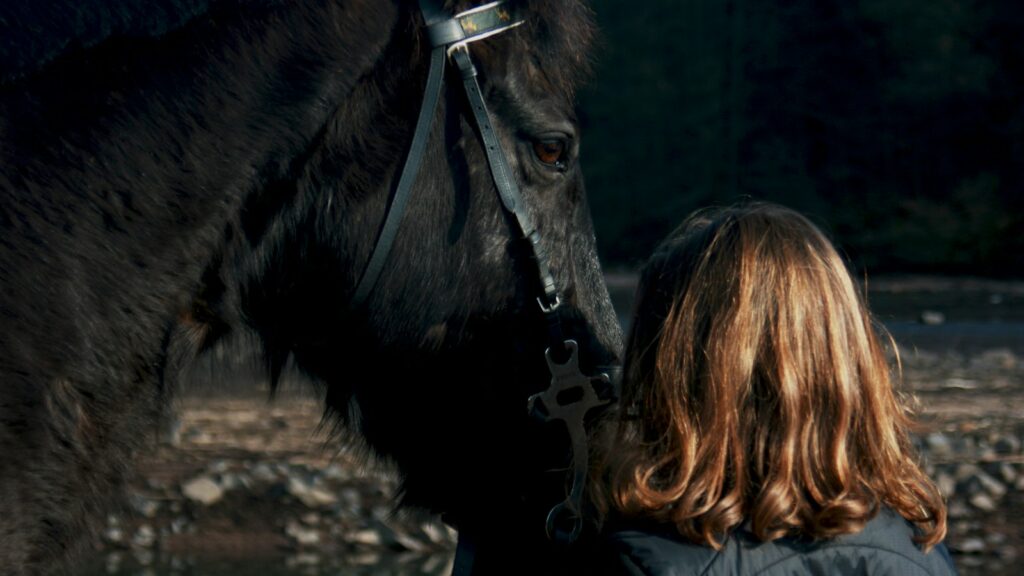
Creating positive associations is a powerful tool in helping your horse accept other animals. If your horse is in the presence of farm animals or dogs at a comfortable distance, introduce something your horse enjoys – special treats, a favorite grooming session, or relaxing groundwork exercises. This creates a mental connection between the presence of other animals and positive experiences. Over time, your horse will begin to associate the sight, sound, and smell of these animals with pleasant outcomes rather than fear. For particularly food-motivated horses, special treats reserved exclusively for these training sessions can accelerate the association process. Be consistent with these positive experiences, as horses learn through repetition and pattern recognition, gradually forming new neural pathways that override previous fear responses.
Specific Strategies for Dog Desensitization
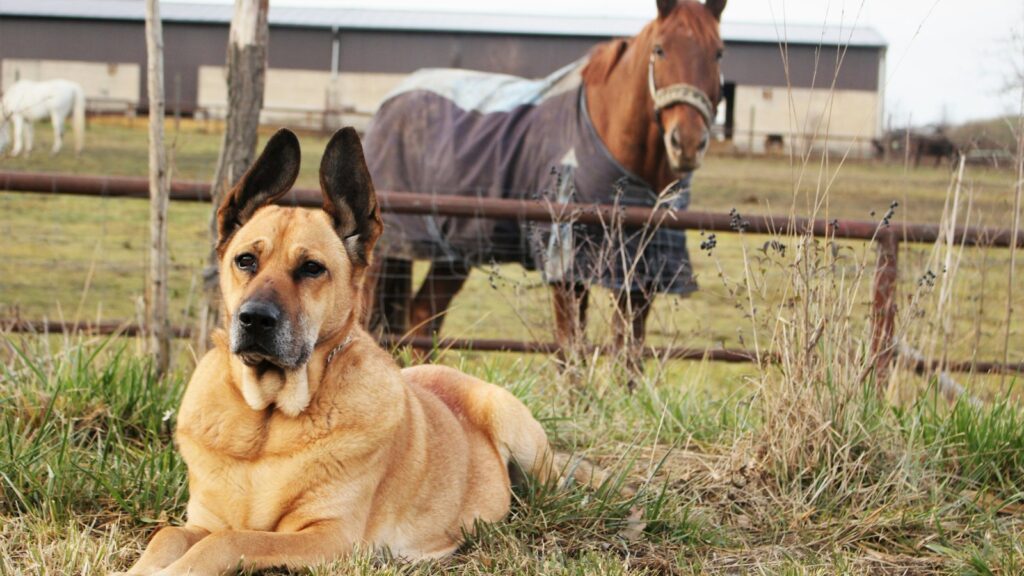
Dogs often present unique challenges in horse desensitization because their predatory behaviors – running, barking, and playful lunging – can trigger intense fear responses in horses. Begin by working with a calm, obedient dog that responds reliably to commands, particularly “stay” and “come.” Have the dog handler keep the dog on a leash during initial sessions, maintaining control over the dog’s movements while gradually introducing movement in predictable patterns. Progress from having the dog simply present but stationary to walking calmly, and only much later to running or playing at appropriate distances. Some horses benefit from meeting the dog while separated by a solid barrier first, allowing them to see and smell the dog without feeling threatened. In extreme cases, consider starting with a stuffed toy dog to help your horse become accustomed to the visual aspect before introducing a real, moving dog.
Introducing Horses to Chickens and Poultry
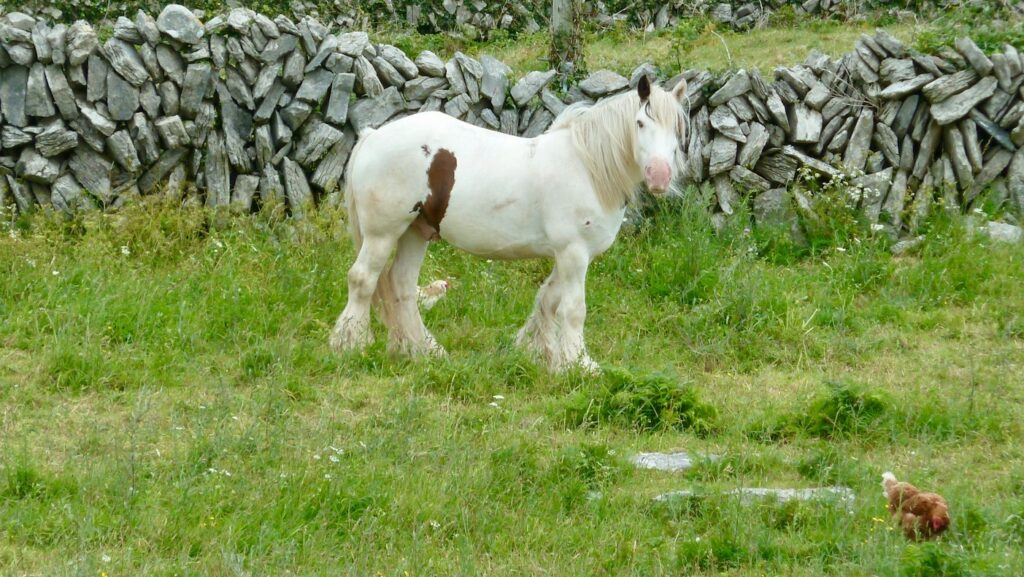
Chickens and other poultry can be particularly challenging for horses due to their unpredictable movements, flapping wings, and sudden noises. Begin by allowing your horse to observe confined poultry from a distance, perhaps with chickens in their coop, while the horse is led past at a comfortable distance. Gradually decrease this distance as the horse shows comfort, eventually bringing a calm, contained chicken closer – perhaps in a secure pet carrier – where the horse can investigate safely. Some horses benefit from first being exposed to feathers or recordings of chicken sounds before meeting actual birds. Once your horse shows comfort with contained poultry, progress to supervised freedom where chickens might move around within a controlled area while your horse observes. Always monitor these interactions closely, as even one negative experience with a flapping, squawking chicken can create a lasting fear response.
Working with Goats, Sheep, and Small Livestock
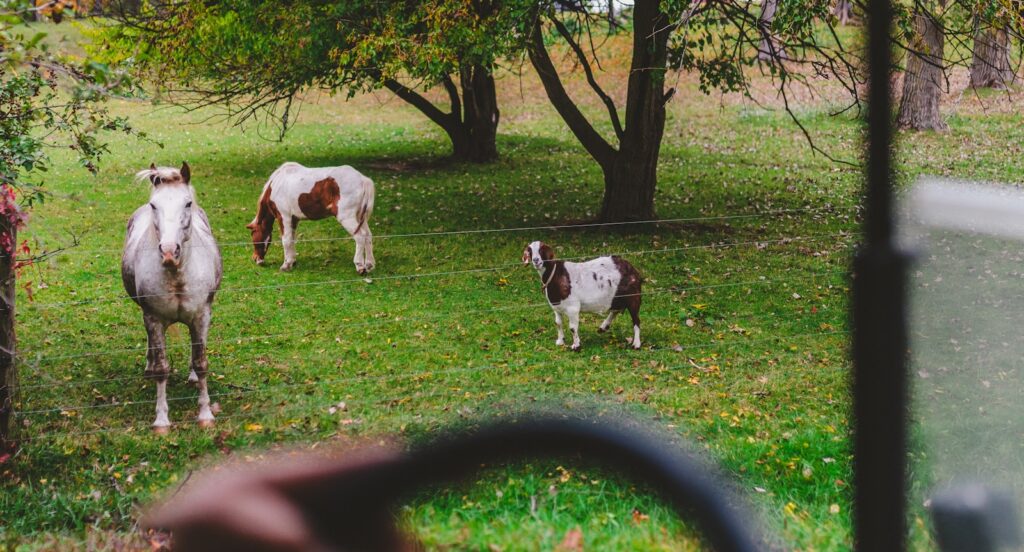
Small ruminants like goats and sheep often share pasture space with horses, making their acceptance particularly important for farm management. Begin introductions with solid fencing between animals, allowing for visual and olfactory familiarization without physical contact. Goats in particular can behave unpredictably, climbing on objects or displaying playful behaviors that might startle horses, so controlled exposure is essential. Lead your horse around the perimeter of the goat or sheep enclosure, rewarding calm behavior, and gradually decrease the distance as comfort increases. Once your horse shows relaxation near these animals, you might progress to having them share fence lines, then eventually shared pasture time under close supervision. Many horses eventually form bonds with these smaller livestock animals, with some even taking on protective behaviors once the initial fear response has been overcome.
Cattle and Large Livestock Considerations
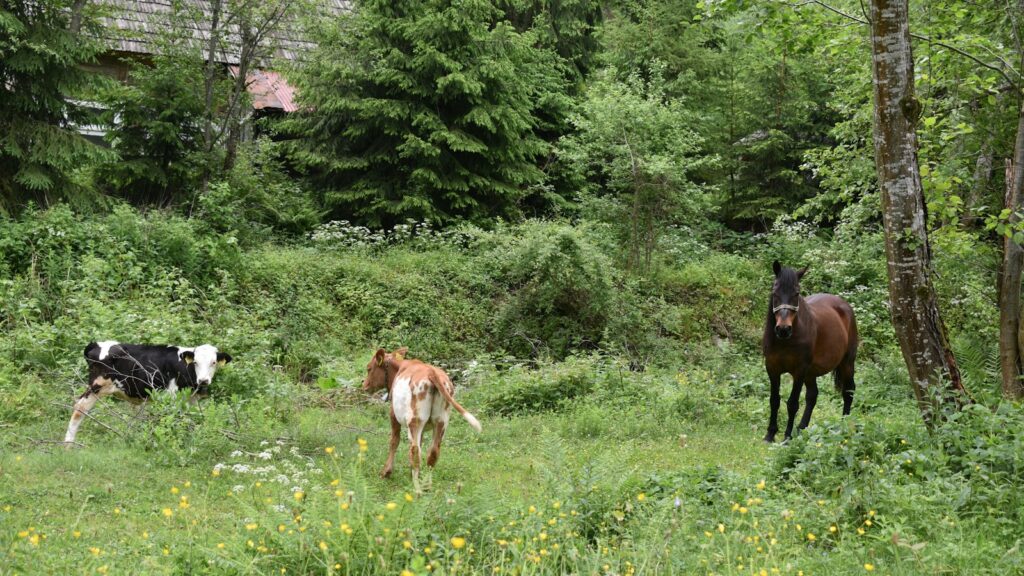
Larger farm animals like cattle present different challenges, as their size and weight can be intimidating even to horses that are generally confident around smaller animals. Begin with visual exposure at a significant distance, perhaps allowing your horse to observe cattle in a neighboring field. Pay particular attention to your horse’s reaction to the specific movements and sounds of cattle – the low bellows, head-swinging, and tail-flicking that characterize bovine behavior. For many horses, the unfamiliar smell of cattle can be as challenging as their appearance, so consider using items with cattle scent (like a brush used on a cow) as an intermediate step. When progressing to closer proximity, choose calm, mannerly cattle for initial introductions, preferably animals accustomed to horses. Some traditional farm setups eventually lead to horses and cattle sharing grazing areas, but this level of integration should only happen after extensive desensitization and always with careful monitoring.
Desensitization Under Saddle
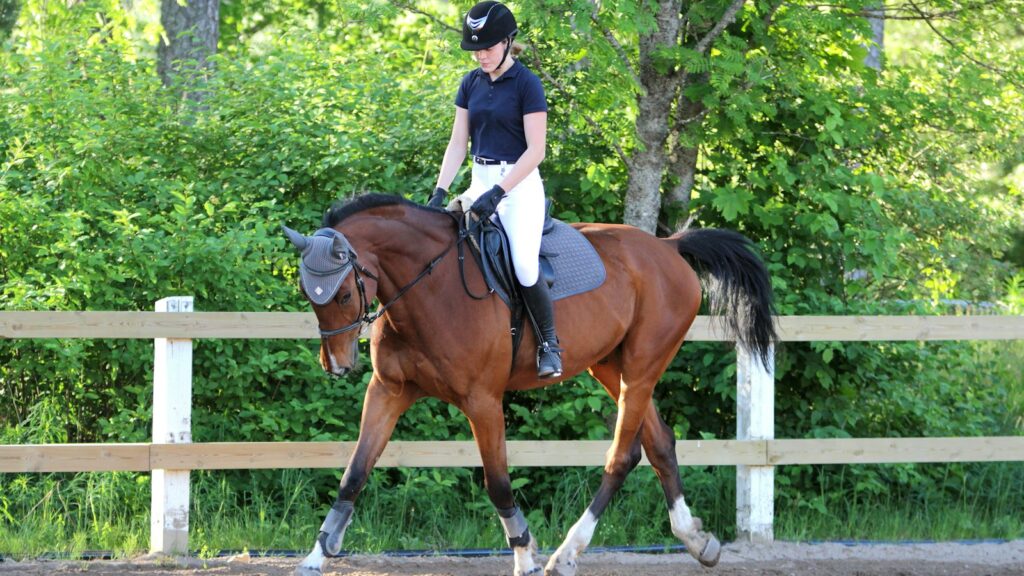
Once your horse shows confidence around other animals during groundwork, it’s important to progress to under-saddle desensitization, as riding adds another dimension to the experience. Begin in a controlled environment like an arena where the handler can bring the farm animal or dog into the space at a comfortable distance while you ride. Focus on maintaining your horse’s attention through basic riding exercises, gradually allowing closer proximity to the other animals as comfort increases. Your calm, confident leadership from the saddle is crucial during this phase – horses are extremely sensitive to rider tension, so managing your own relaxation is as important as managing the horse’s. Progressive exposure might include riding past animal enclosures, then eventually riding while dogs or other animals move freely in the same space. This preparation is essential for trail horses who might encounter dogs or livestock unexpectedly during rides.
Addressing Setbacks and Fear Responses
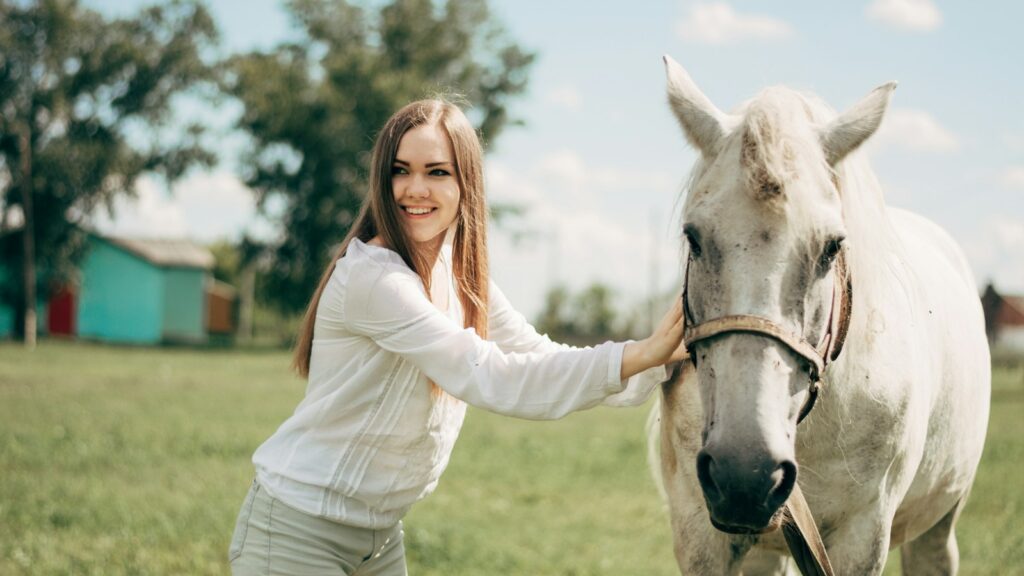
Setbacks are a normal part of the desensitization process and shouldn’t be viewed as failures but rather as information about your horse’s current comfort threshold. If your horse shows a fear response during training, immediately increase the distance from the triggering animal to help your horse regain composure. Recognize signs of escalating anxiety – such as inability to focus, increased respiration, trembling, or sweating – and be prepared to end the session before it becomes a negative experience. After a setback, return to the last successful level of exposure in your next session rather than pushing forward. Consistency is key to rebuilding confidence, so brief, frequent positive sessions often yield better results than occasional lengthy ones. For horses that show extreme or dangerous reactions, consider consulting an equine behaviorist who specializes in fear-based behaviors, as these cases sometimes require professional intervention.
Maintaining Progress Through Regular Exposure
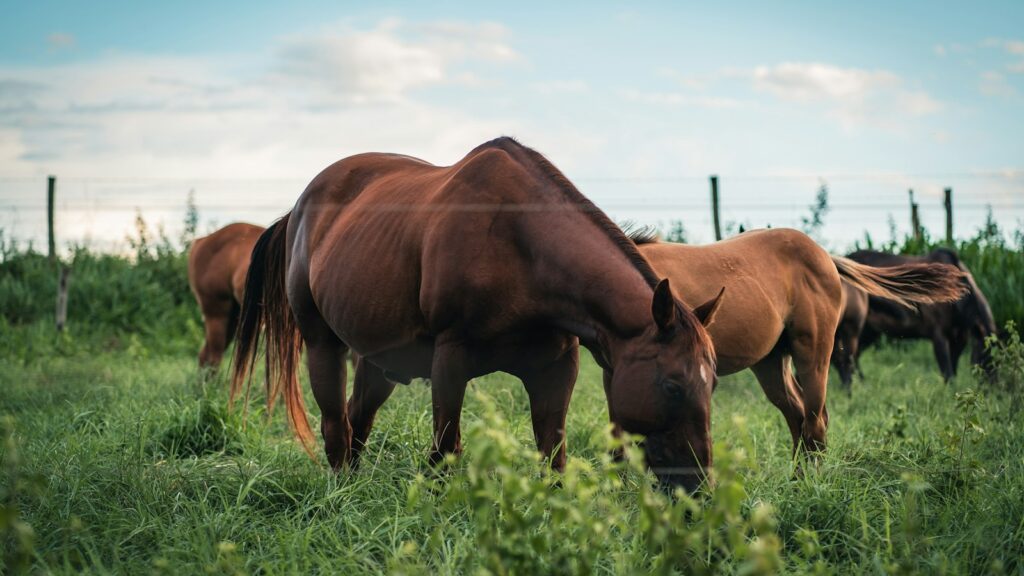
Desensitization is not a “one and done” process but requires ongoing maintenance to ensure lasting results. Once your horse shows comfort around farm animals and dogs, incorporate regular, positive exposures into your routine to reinforce this acceptance. This might include regular shared turnout time with compatible animals, riding in areas where dogs or livestock are present, or incorporating other animals into your regular training sessions. Without this maintenance, horses can regress in their comfort levels, particularly with animals they see infrequently. Consider the changing dynamics as animals mature – a puppy that once seemed harmless might trigger new responses in your horse as it grows into an active adolescent dog. Seasonal changes can also affect interactions, as animals often display different behaviors during breeding seasons, winter confinement, or spring turnout, requiring ongoing attention to your desensitization program.
Special Considerations for Different Horse Personalities
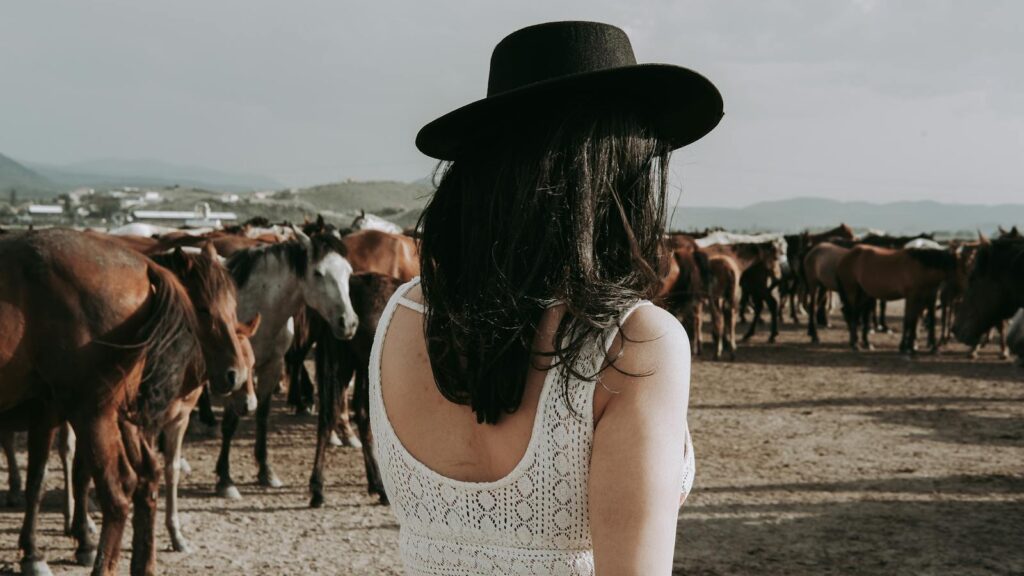
Just like humans, horses have individual personalities that affect how they respond to desensitization training. Confident, curious horses might progress quickly through the program, while more anxious or reactive individuals require a much more gradual approach. Age also plays a role – young horses are often more adaptable and more easily startled, while older horses may have more ingrained fear responses from past experiences. Consider your horse’s general sensitivity level in all training, not just animal desensitization – horses that are reactive to bags blowing in the wind or new objects in the arena will likely need a more methodical approach to animal introduction as well. Tailor your expectations and timeline to your individual horse, celebrating small victories rather than comparing progress to other horses. Some naturally anxious horses may never be completely relaxed around certain animals, but can still learn to maintain a safe, workable level of tolerance.
Creating Harmonious Farm Interactions
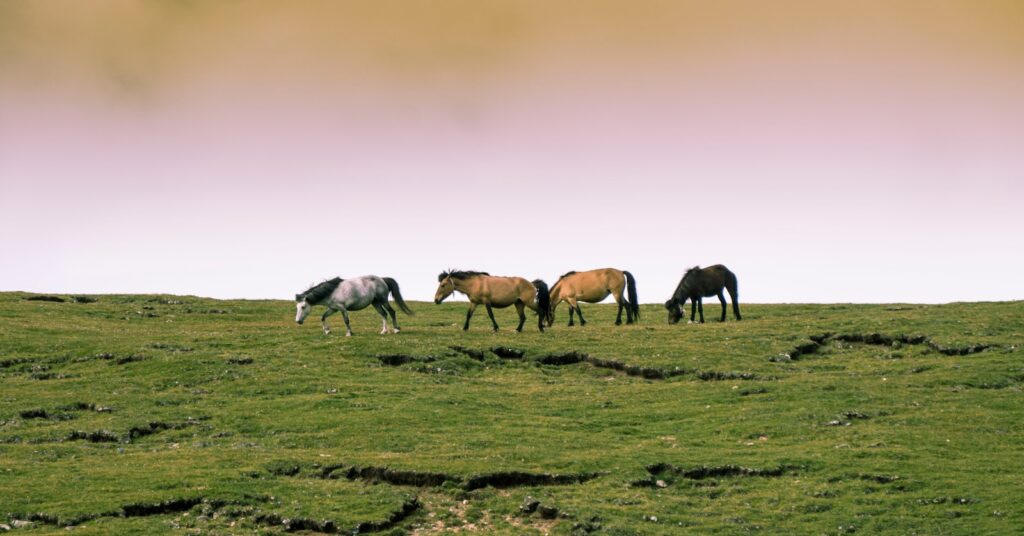
The ultimate goal of desensitization training is to create a harmonious farm environment where all animals can coexist safely. Well-desensitized horses contribute to this harmony by remaining calm during necessary farm operations like moving livestock between fields or having working dogs present during activities. This calmness reduces stress for all animals and reduces risk for handlers. Once proper introductions are complete, many farms find that different species can share resources effectively – horses and sheep grazing together, barn cats keeping rodent populations down in horse areas, or guardian dogs protecting all livestock including horses. This integrated approach often mimics natural ecosystems where different species each play their role. The time invested in proper desensitization ultimately saves countless hours of management challenges and creates a more peaceful, functional farm environment for years to come.
conclusion
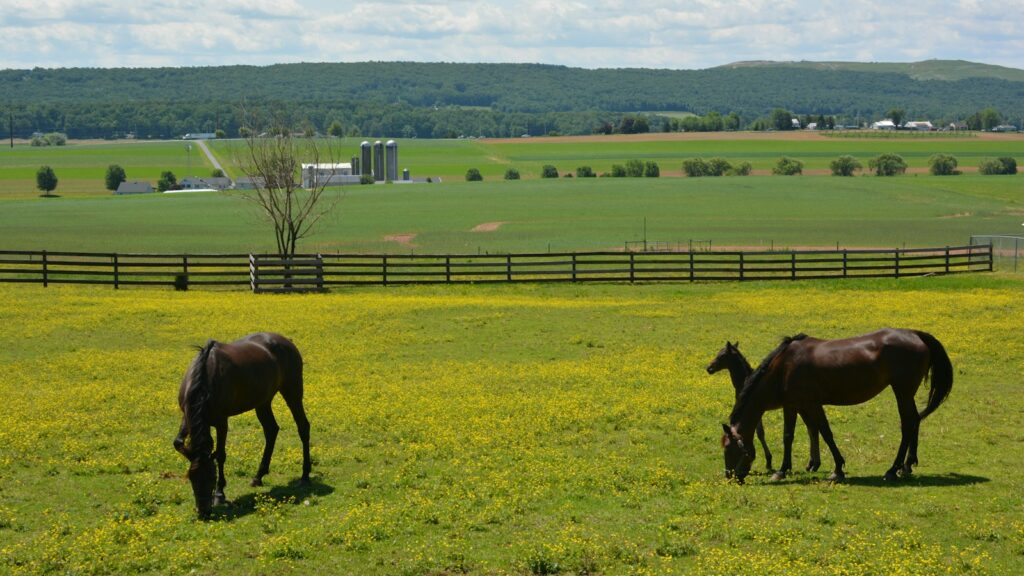
Proper desensitization of horses to farm animals and dogs represents an investment in safety, efficiency, and harmony on your property. While the process requires patience and consistent effort, the rewards are substantial – a confident horse that remains calm around other animals, reduced risk of accidents or injuries, and the practical benefits of integrated farm management. Remember that desensitization is always a work in progress, requiring ongoing attention and reinforcement as circumstances change. By approaching this training with knowledge of equine psychology, respect for your horse’s natural instincts, and commitment to positive methods, you create a foundation of trust that benefits your entire relationship. A confident horse who can graze peacefully while chickens scratch nearby or stand calmly as a farm dog trots past represents not just successful desensitization, but a testament to the remarkable adaptability of these magnificent animals when guided with understanding and patience.

